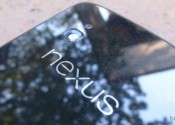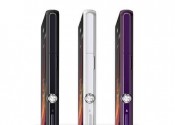Battery-free Wireless Devices Let You Send Texts After Your Phone Dies
We’re one step closer to a true internet of things with the development of new technology that lets devices communicate with each other using existing TV and Wi-Fi signals. The most impressive part? They don’t require batteries.
A team of researchers from the University of Washington just unveiled this new communication technique that doesn’t require any human attention. Known as “ambient backscatter,” this technology literally creates a network out of thin air, and the devices can go anywhere. “We can repurpose wireless signals that are already around us into both a source of power and a communication medium,” explains lead researcher Shyam Gollakota. “It’s hopefully going to have applications in a number of areas including wearable computing, smart homes and self-sustaining sensor networks.”
It sounds handy as hell. These battery free sensors could be installed, for instance, on a keychain that would communicate with your smartphone, so that if your keys fell out of your pocket and into the couch, the sensor would send you a text message after you walked away. According to PhysOrg, “It could be configured so that when the battery dies, the phone could still send text messages by leveraging power from an ambient TV signal.” Presumably, the texts would already have to be written, since it would be pretty tough to write texts on a dead phone.
The implications of ambient backscatter venture far beyond domestic convenience, though. The researchers explain one use case whereby sensors would be installed in the walls of buildings and alert the building manager of any cracks or breaks in its structural integrity. The same could go for bridges, car parts and really anything you can think of. Since the sensors don’t require batteries, they can be very small and really can go anywhere.
It’s pretty incredible when you step back and think about it. Imagine a future of technology where everything is truly wireless. These small battery-free sensors could be the first of an entirely new class of autonomous devices that we spread out across our world to make our life easier. For better or worse, our machines may never leave us alone again.



Leave a Reply